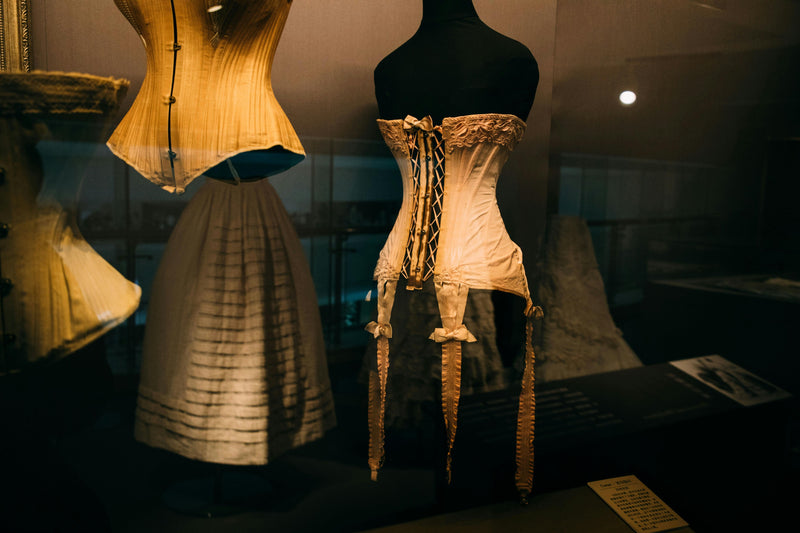
How to Care for and Lace Your Corset
Corsets are intricate and elegant garments, but if you're new to wearing them, they can be a bit intimidating. Here's a comprehensive guide to help you understand the different parts of a corset, and how to properly lace, tighten, and loosen it.
Corset Components:
• Bones: Vertical metal strips, usually steel, providing shape and stiffness. Spiral steel bones offer flexibility, while flat steel bones provide rigidity, particularly at the back for lacing support.
• Busk: The front closure, typically with hook and eye fasteners, allowing easy removal.
• Grommets/Eyelets: Metal-reinforced holes at the back for threading laces, usually spaced about an inch apart for optimal support.
• Lacing: A single length of ribbon threaded through the grommets in an 'X' pattern. Non-stretch materials like parachute cord, silicone, or polyester ribbon are common choices.
• Modesty Panel: Fabric behind the lacing to prevent skin exposure and protect from friction.
• Waist/Pull Loops: Two loops at the waist for tightening and loosening the corset.
Preparation Before Wearing Your Corset:
1. Loosen the Laces: Start from the bottom and work upwards. Avoid tightening from the ribcage down.
2. Use a Corset Liner: This protects the corset from sweat and dead skin cells, extending its lifespan.
3. Apply Powder: If not using a liner, apply a light layer of baby or talcum powder to prevent slipping and reduce itching.
4. Empty Stomach and Bladder: Avoid wearing a corset after large meals or when your bladder is full to prevent bloating.
Lacing Up Your Corset Alone:
1. Wrap and Align: Wrap the loosened corset around you with the busk unhooked. Ensure the busk is centered on your chest and the laces are at your back.
2. Close the Busk: Start hooking from the middle, then move to the top or bottom.
3. Tighten the Laces: Use the waist loops to tighten the corset to a comfortable fit. Ensure it’s neither too tight nor too loose.
4. Adjust and Secure: Check that the corset hasn’t shifted and tie the waist loops in a bow to secure.
Common Lacing Mistakes to Avoid:
• Over-Tightening at the Hips: Leave some space to prevent discomfort and slipping.
• Excess Lace Handling: Avoid wrapping excess lace around your waist, which can damage the corset. Use pre-sewn ribbon patterns instead.
Removing and Storing Your Corset:
1. Loosen the Laces: Gently pull on each 'X' of the lacing.
2. Unfasten the Busk: Once fully loosened, unhook the busk and remove the corset.
3. Prepare for Storage: Tighten the laces, re-tie the bow, and re-fasten the busk to maintain shape.
4. Store Properly: Lay it in a drawer with no delicate garments or fold into thirds if space is limited. For larger collections, use a plastic bin. For a single corset, consider a mannequin body.
Cleaning Your Corset:
1. Avoid Washing Machines: Always hand-clean to prevent damaging the bones.
2. Air Out: Hang over a chair or sofa to air out after use.
3. Spot Clean: Use a soft, damp cloth for stains. For deeper cleaning, consult a dry cleaner.
By following these steps, you can ensure your corset remains in excellent condition, providing both function and fashion for years to come. Ready to embrace the elegance of corsetry? Visit a store and start your collection today!



